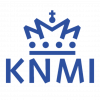Tandem Winds from S-NPP and NOAA-20
The Visible and Infrared Imaging Radiometer Suite (VIIRS) polar winds product is currently operational for the Suomi National Polar-orbiting Partnership (S-NPP) and NOAA-20 satellites, providing wind speed, direction, and pressure of cloud-tracked features at high latitudes, both Arctic and Antarctic. The S-NPP product has been operational since May 2014. The VIIRS winds are being assimilated in the Naval Research Lab (NRL) forecast system and are currently being monitored in NCEP’s pre-operational model. They are also used by a number of numerical weather prediction centers worldwide.
The VIIRS, Moderate Resolution Imaging Spectroradiometer (MODIS), and Advanced Very High Resolution Radiometer (AVHRR) wind products use three successive orbits (100-minute time step) from a single satellite to derive cloud motion. Since JPSS-1 – now NOAA-20 – is in a similar orbit as S-NPP but delayed by ½ orbit in time, there is an opportunity to track clouds from the NOAA-20/S-NPP tandem. This will reduce the time interval between images to approximately 50 minutes, which will result in reduced latency in product availability, potentially higher quality winds due to the shorter time interval for tracking, and global rather than only high-latitude coverage. The NOAA-20/S-NPP orbit configuration is similar to that of Metop-A/-B. EUMETSAT has exploited this orbit configuration and developed a Metop-A/-B wind product. Metop-A/-B case studies done by the authors and EUMETSAT’s own analyses show that the tandem winds are in good agreement with single-satellite winds at high latitudes. There are, however, larger uncertainties in the tropical regions.
VIIRS tandem winds are now being routinely generated as a research product. Statistical comparisons with rawinsondes and VIIRS single-satellite winds show the tandem winds product to be of high quality. Some factors that impact the accuracy of winds are still being investigated. These include the impact of parallax in the tropics, and the increased uncertainty in winds derived at short time scales and with only two orbits. Results of these investigations and early results from the NOAA-20/S-NPP tandem will be presented, both for orbit pairs and orbit triplets.






